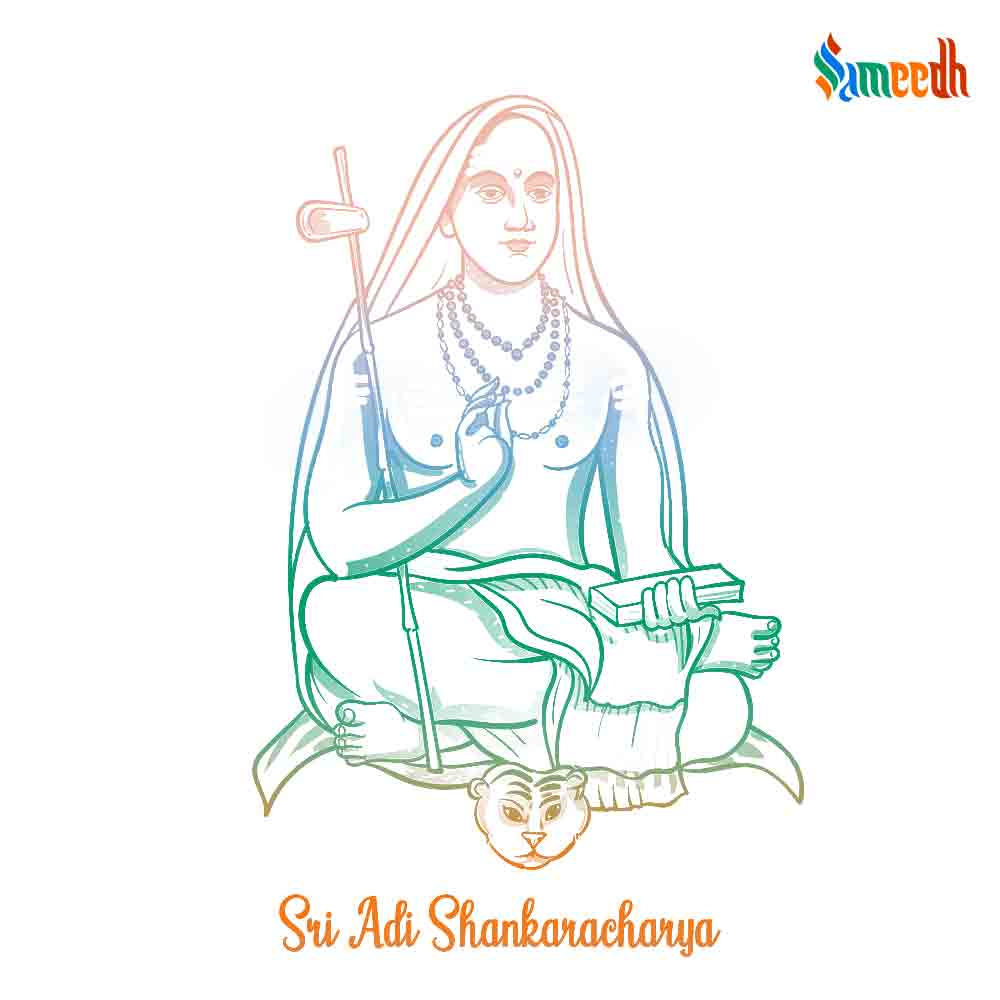Vivek Chudamani is the guiding light for anyone who wishes to learn Yoga in its true form. It is one of the best pieces of work created by Adi Shankaracharya on the philosophy of Advait Vedant.

ETYMOLOGY
Vivek Chudamani is the scripture that creates the foundation of the Advait Vedant philosophy of Indian civilization. Vivek Chudamani is a Sanskrit word. The word ‘Vivek’ means ‘discrimination’ or ‘the ability to understand the differentiation’. ‘Chuda’ means ‘crest’ or ‘top part of the crown’, and ‘Mani’ means a ‘jewel’. So, Vivek Chudamani broadly means ‘the crown jewel of differentiation’.
So, what is the crown that we are referring to? Imagine four Ved as a body, then the Upanishad are the Head, and all the Bhasya or commentaries on them together make the Crown of Knowledge. And Vivek Chudamani is the crown jewel.
What is the differentiation about? It is about things that are real and things that are perceived to be real.
HISTORY
One of the greatest scholars in the history of India – Adi Shankaracharya – is widely regarded as the author of this treatise. It is believed to be an anthology with numerous different versions being discovered in different Math and Monasteries. However, the introduction to Advait Vedanta, authored by Adi Shankara in the 7th to 8th Century CE, makes up its core. There are other scriptures on Advait Vedant, but Vivek Chudamani is the most popular of them all. It is a ‘Prakaran Granth’ type of scripture, which makes it easier for the common readers to understand. Also, it is sung in Shardul Vikridit type of meter for memorizing and reciting it.
CONTENT
Vivek Chudamani has about 580 verses which are divided into 18 sections or ‘Prakaran’. It encompasses the true meaning of life, and it helps a person understand the reality of mind, body, and soul. Just like many other ancient Indian scriptures, Vivek Chudamani is also written in the format of a conversation between a seeker and a Guru. It effectively lists the different aspects of life and then explains the differentiation between them.
LEARNINGS
Vivek Chudamani effectively explains the non0dualistic school of philosophy called Advait Vedant. It presents the concept of one single reality – Brahman – as the ultimate truth of the universe. It dwells upon various aspects such as the significance of the Human avatar, preliminary requisite of a seeker, qualities of a true guru, self-commitment, ways to liberation, etc. It also helps a seeker understand the difference between the subtle body and the causal body. At the same time, it also explains the oneness of oneself with the supreme self – Parmatma.
CULTURAL INFLUENCE
Vivek Chudamani is the most revered scripture for those who wish to expand their wisdom and attain the truth. It is considered to be the most comprehensive scripture on Advait Vedant. Obviously, there are numerous commentaries or Bhasya texts on the ideas explained by Adi Shankaracharya.
If you are an admirer of metaphysics, Adi Shankara’s ideas on Advait Vedant are the finest resource for you. You can start by reading Vivek Chudamani and just follow the wisdom of the Ved. But before that, you should read more about one of the greatest revolutionaries of Indian civilization.
